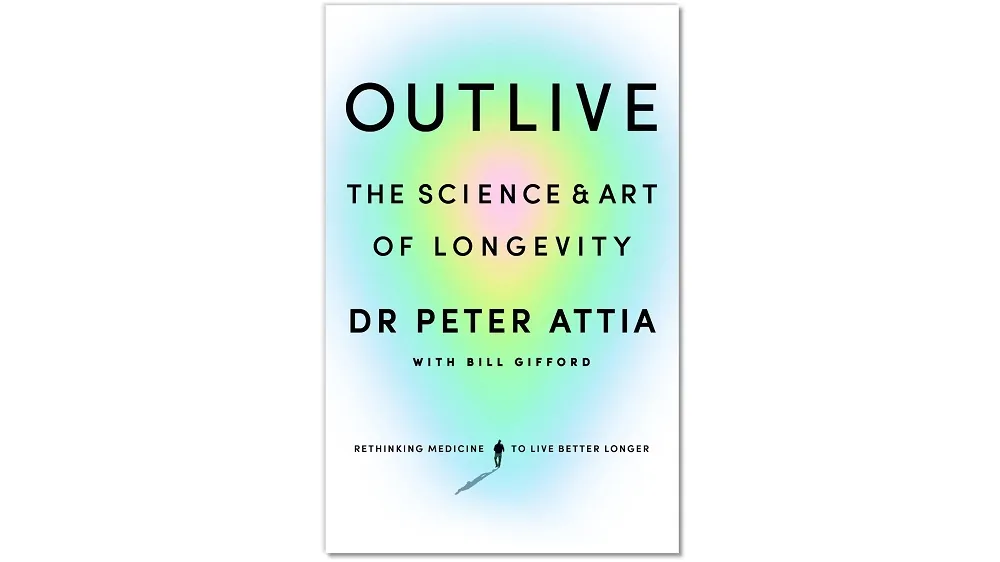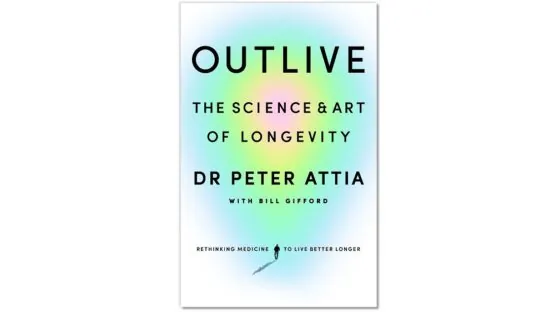Peter Attia, M.D., popular host of The Drive, has nearly a million followers across his social media platforms. In his first book, OUTLIVE The Science and Art of Longevity, he summarizes much of the evidence and wisdom that he has delivered to his audience over the years by providing a no-nonsense evidence-based tactical manual for optimizing healthspan.
A matter of risk
The book opens with a brief recounting of the practice of medicine through the ages, emphasizing how the system has evolved to address acute illness and injury but not sensibly assess and manage the risks associated with the major metabolic diseases that account for 80% of deaths in people over 50 who do not smoke: atherosclerotic disease, cancer, neurodegenerative disease, and metabolic disease.
Attia reinforces this point by noting that once we account for people who were spared from death by infectious disease, life expectancy has only changed marginally since 1900. From here, Attia introduces the basic concepts of what he terms Medicine 3.0: prevention, personalization, and intelligent risk assessment.
The failure to estimate risk over longer time horizons is cited as a major fault of traditional medical practice, which does not address the major metabolic diseases at their inception but waits until those diseases are developed to the point at which the costs of intervention are much higher and more likely to fail.
A roadmap to healthspan
Attia unfurls a tactical roadmap to optimize healthspan. The first step is to concretely envision our future centenarian selves. What functional capacities do we imagine we’re going to have at 90 without a plan? Is our current trajectory likely to take us there? Attia explains how those answers are obtained through a thorough process of risk assessment, functional testing, and education.
Attia’s strategy of optimizing healthspan requires a focus on its three primary vectors: cognitive ability, physical function, and emotional health. If any of these component parts of healthspan are neglected, the idea of meaningful longevity is lost.
Part II discusses the strategy for optimizing lifespan in greater detail and the science that informs it. Attia addresses what we can learn from centenarian studies and how it is possible to capture the cognitive, functional, and emotional characteristics of centenarians without necessarily having the best genes.
Next, the author tackles the topic of caloric restriction before moving on to sharing his insights into the mechanisms underlying aging and how they are related to the development of diabetes, cardiovascular disease, and neurodegenerative disease. How and when do they begin? What forces drive them? Most importantly, how can they be delayed or even prevented entirely?
The strategy in detail
In Part III of OUTLIVE The Science and Art of Longevity, Peter Attia presents a comprehensive set of tactics in five main areas to optimize healthspan and longevity. These tactics, based on evidence and practical wisdom, are designed to help people achieve their envisioned future selves at 90 and beyond.
Exercise: Attia emphasizes the importance of incorporating a balanced mix of aerobic and anaerobic exercises, including Zone 2 and Zone 5 training, strength training, and flexibility/mobility workouts. These diverse exercise routines contribute to improved cardiovascular health, increased muscle mass, enhanced flexibility, and reduced risk of chronic diseases.
Nutrition: Attia advocates for a whole-foods-based diet rich in vegetables, lean proteins, healthy fats, and complex carbohydrates, with a focus on limiting processed foods and added sugars. He also discusses the potential benefits of intermittent fasting, time-restricted feeding, and caloric restriction in promoting cellular repair, metabolic health, and longevity. Personalization of dietary plans based on individual needs and genetics is a key aspect of his recommendations.
Sleep: Recognizing the critical role of sleep in overall health, Attia provides strategies for optimizing sleep quality and quantity. These include maintaining a consistent sleep schedule, creating a sleep-conducive environment, and addressing sleep disorders through appropriate medical interventions.
Emotional Health: Attia underscores the necessity of nurturing emotional well-being for a fulfilling, long life. He suggests practicing mindfulness techniques, such as meditation and gratitude journaling, prioritizing social connections, and engaging in leisure activities to foster emotional resilience and reduce stress.
Exogenous Molecules: Attia explores the potential benefits of carefully selected drugs, hormones, and supplements in addressing nutrient deficiencies, optimizing hormone levels, and promoting overall health. Some examples include fish oil, vitamin D, magnesium, and metformin. He advises consulting a healthcare professional before starting any new supplement or medication regimen.
Conclusion
Peter Attia’s OUTLIVE The Science and Art of Longevity offers a practical and evidence-based manual for people who want to to optimize their healthspan and achieve meaningful longevity. Through the application of Medicine 3.0 principles—prevention, personalization, and intelligent risk assessment—readers are empowered to take control of their health trajectories and work towards realizing their envisioned centenarian selves.




